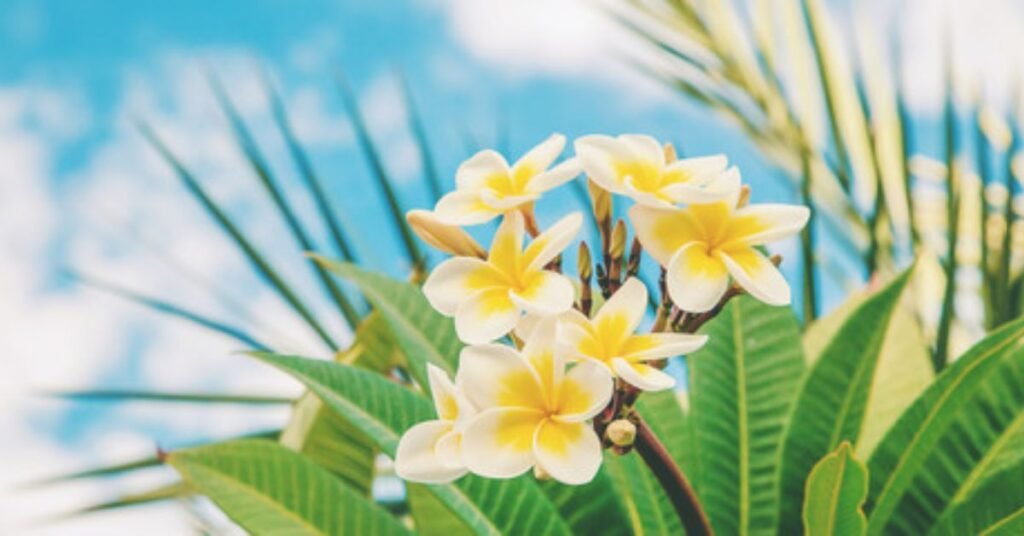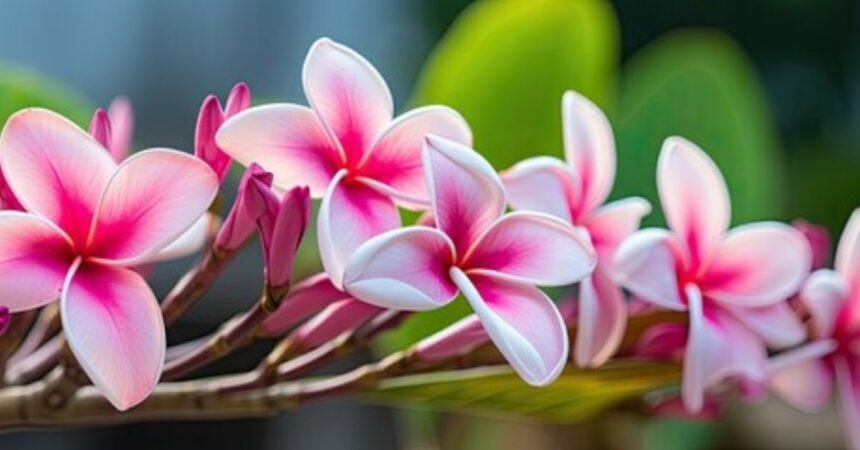Introduction
Hawaiian flowers are renowned for their vibrant colors, exotic shapes, and unique fragrances. These flowers not only add beauty to the Hawaiian Islands but also hold cultural significance. From leis worn during special occasions to traditional medicine and cooking, Hawaii play an integral role in Hawaiian culture.
In this guide, we will explore the various types of Hawaii, their meanings, benefits, uses, and how they have become symbolic of the Hawaiian lifestyle. Whether you’re planning a trip to Hawaii, interested in gardening, or simply curious, this article will provide all you need to know about Hawaii’s.
1. Overview of Hawaiian Flowers
Hawaii’s are known for their tropical appearance, lush textures, and vibrant hues. These flowers thrive in Hawaii’s warm climate, volcanic soil, and abundant rainfall, making the islands an ideal place for diverse and unique blooms. Many Hawaii’s are endemic, meaning they can’t be found anywhere else in the world.
2. History of Hawaiian Flowers
The history of Hawaii’s dates back to ancient Polynesian settlers who brought many plants with them. Over time, native flowers developed, adapting to the islands’ unique environment. Flowers were used in religious ceremonies, medicine, and as symbols of status, with each flower carrying its unique meaning.
3. Types of Hawaiian Flowers
Hawaii is home to a wide variety of flowers, each with its distinct characteristics. Some of the most popular Hawaii’s include:
Plumeria (Frangipani)
- Known for its sweet fragrance and vibrant colors
- Often used in leis and as a symbol of positivity
Hibiscus (Hibiscus brackenridgei)
- Hawaii’s state flower, known for its large, trumpet-shaped petals
- Found in various colors such as red, yellow, pink, and white
Bird of Paradise (Strelitzia reginae)
- Resembles a bird in flight, making it a striking addition to gardens
- Known for its bright orange and blue petals
Orchid (Orchidaceae)
- A symbol of beauty and strength
- Grows in different varieties with stunning shapes and colors
Anthurium (Anthurium andraeanum)
- Recognized for its heart-shaped, waxy petals
- Often seen in red, pink, and white hues
Ginger (Awapuhi)
- Includes several varieties like red ginger and white ginger
- Used in cooking, medicine, and as a fragrant lei flower
4. The Importance of Hawaiian Flowers in Culture
Hawaii’s play an essential role in Hawaiian culture and traditions. They represent love, respect, and connection to nature. Flowers are exchanged as gifts, worn during special occasions, and used in ceremonies. The Hawaiian lei, often made from native flowers, is a symbol of affection, friendship, and the spirit of Aloha.

Cultural Significance Examples:
- Weddings: Hawaii’s are used to make leis for the bride and groom.
- Celebrations: Birthdays, graduations, and anniversaries often involve gifting leis made from Hawaii’s.
5. Benefits of Hawaiian Flowers
Hawaii’s offer various benefits beyond their beauty:
Aesthetic Appeal
- Enhance gardens, homes, and public spaces with their vibrant colors and unique shapes.
Aromatherapy
- Hawaii’s, like plumeria and gardenia, are used in aromatherapy for relaxation and stress relief.
Health Benefits
- Flowers like ginger have medicinal properties and are used in traditional Hawaiian healing practices.
6. Uses of Hawaiian Flowers in Everyday Life
Hawaii’s have a range of uses, from decoration to wellness:
- Leis: Used in ceremonies, greetings, and farewells
- Hair Accessories: Worn by Hawaiian women as a symbol of beauty
- Essential Oils: Extracted from flowers like plumeria for perfumes and lotions
- Cooking: Edible flowers like hibiscus add flavor and color to dishes
7. Popular Hawaiian Flowers and Their Meanings
Every Hawaiian flower carries a unique meaning, often linked to Hawaiian folklore and traditions:
Plumeria
- Represents positivity, new beginnings, and creation
- Often associated with love and birth
Hibiscus
- Symbolizes delicate beauty and femininity
- The red hibiscus represents passion, while yellow signifies friendship
Orchid
- Represents luxury, beauty, and strength
- A popular choice for weddings due to its association with love
Bird of Paradise
- Symbolizes joy and paradise
- A sign of freedom and success
8. Hawaiian Flowers in Traditional Medicine
Many Hawaii’s have medicinal properties, used for centuries in traditional healing:
- Ginger: Relieves nausea, inflammation, and respiratory issues
- Noni (Indian Mulberry): Used to treat skin conditions, infections, and digestive problems
- Awapuhi (Shampoo Ginger): Extracted for hair and skin care
9. Hawaiian Flowers in Lei Making
Lei-making is a traditional Hawaiian art, where flowers are strung together to create beautiful garlands. Each lei has its significance, depending on the type of flowers used. For instance, a lei made from maile vine symbolizes respect and is often worn during weddings.
Popular Lei Flowers:
- Plumeria
- Orchid
- Carnation
- Pikake
10. Growing Hawaiian Flowers at Home
Many people wish to bring a touch of Hawaii to their gardens. Growing Hawaii’s requires knowledge of their specific needs:
- Sunlight: Most Hawaii’s thrive in full sun, but some prefer partial shade.
- Watering: Regular watering is essential, but avoid overwatering.
- Soil: Use well-draining soil rich in organic matter.
Popular Choices for Home Gardens:
- Hibiscus
- Bird of Paradise
- Plumeria
11. Challenges in Cultivating Hawaiian Flowers
Growing Hawaii’s can be challenging, especially in non-tropical climates. Common issues include:
- Pests: Aphids, mites, and snails can damage flowers.
- Cold Temperatures: Hawaii’s are sensitive to frost and cold weather.
Solutions:
- Use natural pest control methods like neem oil.
- Protect plants from cold weather by covering them or bringing them indoors.
12. How to Care for Hawaiian Flowers
Caring for Hawaii’s ensures they stay vibrant and healthy:
- Pruning: Regularly trim dead or damaged parts.
- Fertilizing: Use a balanced fertilizer to promote growth.
- Pest Control: Monitor for pests and treat them promptly.
13. Hawaiian Flower Festivals
Hawaii celebrates the beauty of its flowers with various festivals, such as:
- The Aloha Festivals: Showcases Hawaiian culture, music, and flowers.
- The Merrie Monarch Festival: Celebrates hula dance and features flower arrangements.
14. Environmental Impact of Hawaiian Flowers
Hawaii’s contribute to the islands’ biodiversity, attracting pollinators like bees and birds. However, human activities threaten native flowers through habitat loss, invasive species, and pollution.
Conservation Efforts:
- Hawaiian organizations work to protect native flower species and promote sustainable gardening practices.
15. Hawaiian Flowers in Art and Fashion
Hawaii’s have inspired artists, designers, and fashionistas for decades. They are often featured in paintings, tattoos, clothing, and accessories. The use of flower motifs reflects the natural beauty and spirit of Hawaii.
Examples:
- Hawaiian shirts with floral patterns
- Jewelry made from dried flowers
16. Conclusion
Hawaiian flowers are more than just beautiful blooms; they’re a reflection of the Hawaiian spirit, culture, and lifestyle. Their vibrant colors, unique shapes, and rich symbolism make them a cherished part of Hawaii’s identity. Whether used in lei-making, traditional medicine, or as decorations, Hawaiian flowers continue to captivate people around the world.
FAQs
1. What is the most popular Hawaiian flower?
The hibiscus is the most popular and is also Hawaii’s flower.
2. Can I grow Hawaiian flowers outside of Hawaii?
Yes, many Hawaii’s can be grown in tropical or subtropical climates, or indoors with proper care.
3. Are Hawaiian flowers used for medicinal purposes?
Yes, flowers like ginger and noni have been used in traditional Hawaiian medicine for centuries.
4. How are Hawaiian flowers used in lei-making?
Flowers are strung together using a needle and thread to create leis, symbolizing love, respect, or celebration.
5. What do Hawaiian flowers symbolize?
Hawaii’s symbolize various things, such as love, beauty, friendship, and new beginnings, depending on the type of flower.
Embrace the enchanting world of Hawaii’s and experience their beauty, fragrance, and cultural significance. Whether you’re admiring them in a garden or wearing them in a lei, Hawaii’s are a true representation of Hawaii’s vibrant spirit.








